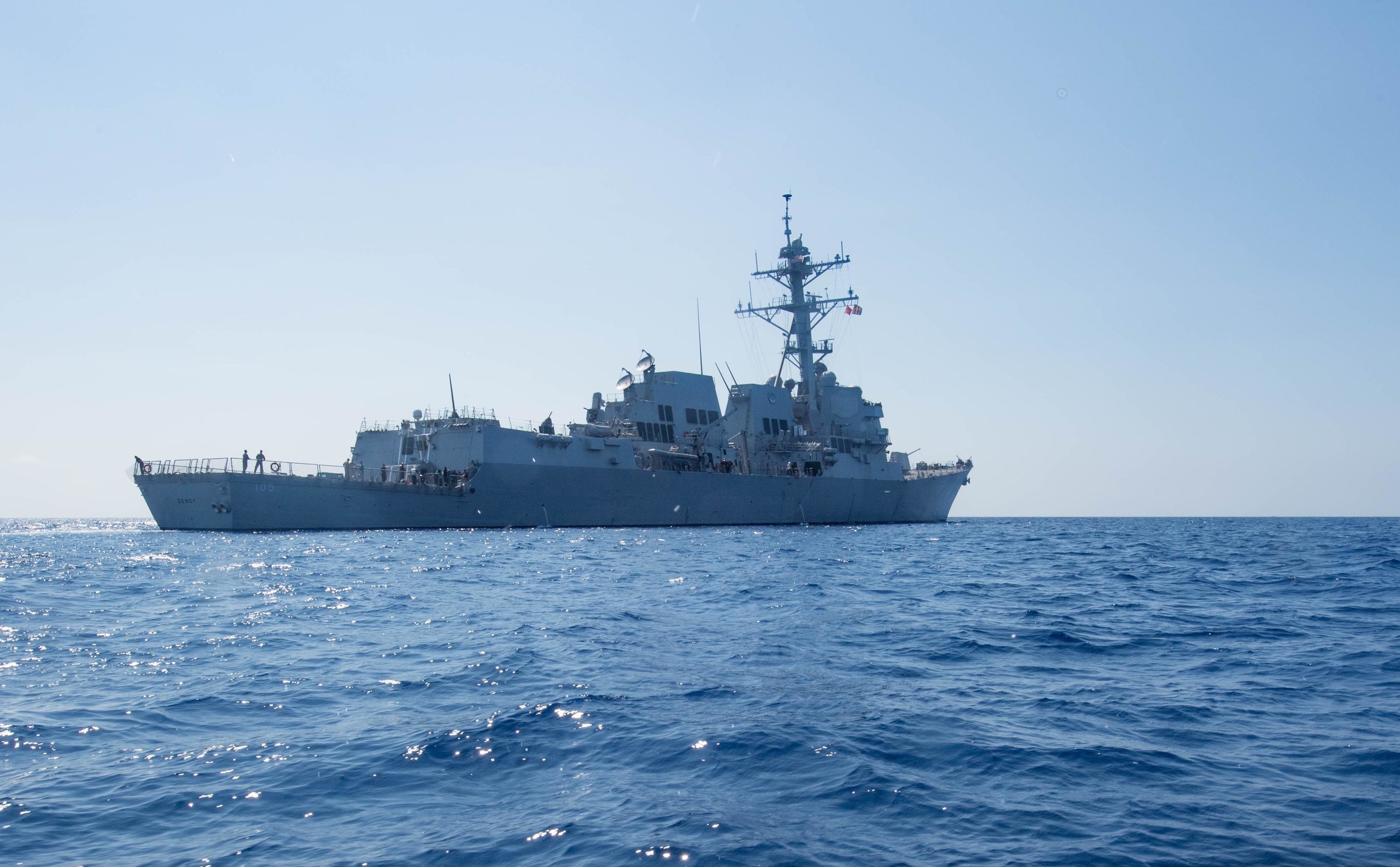By: Ben Werner

USS Dewey (DDG-105) transits the South China Sea on May 6, 2017.
THE PENTAGON — The war of words over last weekend’s U.S. Navy freedom of navigation operation in the South China Sea continued on Thursday at press conferences in Beijing and Washington.
Pentagon officials have neither plans to stop sending warships steaming past the artificial islands China has built in the South China Sea nor stop testing expansive territorial claims, Lt. Gen. Kenneth McKenzie, the director of the Joint Staff, said on Thursday
“We’re going to continue to conduct freedom of navigation operations as allowed by international law and we’re going to continue to do the things that we’re doing,” McKenzie said during the Pentagon’s weekly on-camera media briefing.
McKenzie was responding to media questions about last weekend’s freedom of navigation operation, where Ticonderoga-class guided-missile cruiser USS Antietam (CG-54) and Arleigh Burke-class destroyer, USS Higgins (DDG-76) conducted a FONop past the Paracel Island chain.
When asked by members of the press corps about U.S. military planners concern over a potential long-term threat to navigation posed by the South China Sea island building, McKenzie referenced the U.S. island hopping strategy employed in World War II to repel the advancement of Japan’s military.
“It’s just a fact we have a lot of experience in the Second World War taking out small islands that are isolated. That’s a core competency of the US military that we’ve done before,” McKenzie said.
“You shouldn’t read anything more into that than a simple statement of historical fact.”
China has deployed surface to air missiles and other air defense assets to many of their South China Sea islands, McKenzie said.
When asked whether Pentagon officials expect an escalation in China’s response to future freedom of navigation operations, McKenzie said, “I couldn’t speculate as to what China’s actions in the future might or might not be.”
Aucun commentaire:
Enregistrer un commentaire